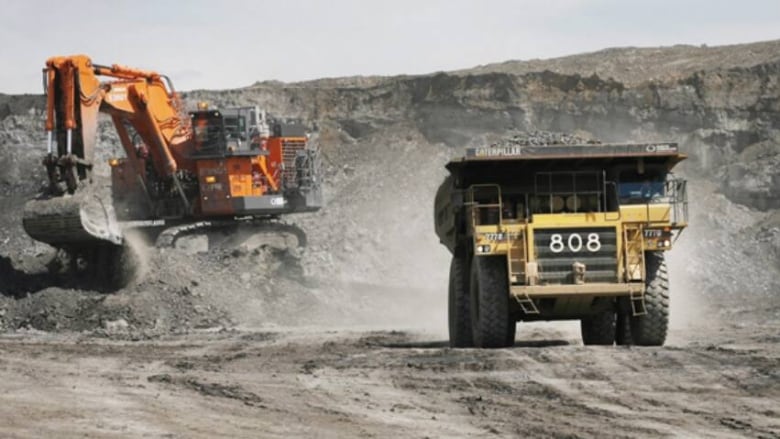Alberta squandered oil wealth with big spending, Fraser Institute says
Norway has $759B in its sovereign wealth fund, Alaska has $64B, so why is Alberta crying poor?

In the next week, Alberta will release its third-quarter fiscal update.It's not going to be pretty.
Premier Jim Prentice says the drop in energy prices, particularly for oil, has drained $7 billionfrom government revenues. This fiscal update is widely expected to show the province sliding into a deficit for the current fiscal year.
A report from the Fraser Institute says it didn't have to be this way, and that with some restraint, Alberta could still be in surplus and have saved billions in the Heritage Savings Trust Fund.
Spending surge
Here's the math of authors Mark Milke and Milagros Palacios.
Ten years ago, before the boom started in earnest, Alberta spent $8,965 (in 2013 dollars) per person in program spending. This does not include capital spending on items like hospitals, schools and roads.
The report argues that had the province increased program spending in the following years at the rate of inflation plus population growth, it would have spent$295billion on programs over the next nine years.
Instead it spent $345 billion, a $49-billiondifference.Last year aloneit spent $8 billion, a little more than the expected hole in next year's provincial budget.
So where did the money go?Mark Milke says a lot went to public sector wage growth, which in some yearsgrew at nearly twice the rate of inflation.
- Province to legislate Alberta teachers'deal
- Jim Prentice eyes public sector wages in budget crunch
- Premier Jim Prentice and cabinet take 5% wage cut
"When you take these wage deals and unreformed pensions and start to multiply them by200,000 people in theprovincial public sector in Alberta, then over time, you get these big numbers."
Norway model may have saved $101B
The report alsoexamines the savings plan of three oil-producing jurisdictions: Alberta, Alaska and Norway. As you can imagine, Alberta doesn't show well.
Between 2006 and 2008, Alberta contributed $4.5 billion to the Heritage Savings Trust Fund. Nothing has gone in since then, andthe fund's total sits at $15 billion.
In Alaska, a minimum of 25 per centofresource revenues are deposited into its Alaska Permanent Fund. The income generated from the fund can be used by the state government, but not the principal. As of June 2014, the fund stands at nearly $64 billion US.
In Norway, 100 per centof net proceeds from resource revenue are supposed to flow into afund. According to Milke, that doesn't happen every year, but Norway has gotten close to that ideal. The Norwegian Petroleum Fund sits at $759 billion as of Sept.30, 2014.
Milke argues that had Alberta followed the Alaska model, it would have deposited $25 billion into the Heritage fund between 2005 and 2014. If it had followed the Norwegian model, the number would have been $101 billion.
Provincial sales tax
As Alberta prepares for a tough budget for the next fiscal year, the idea of either a provincial sales tax or higher corporate taxes has surfaced repeatedly
Milke says this report was written to remind Albertans of the alternative.
"You can talk about taxes, but why not look at the spending first."












_(720p).jpg)


 OFFICIAL HD MUSIC VIDEO.jpg)
.jpg)



























































































